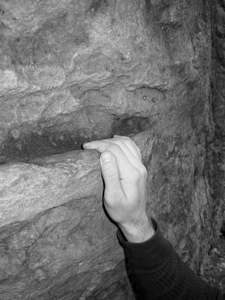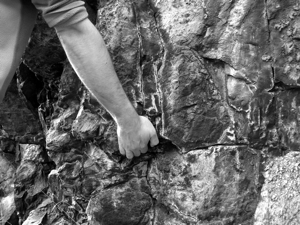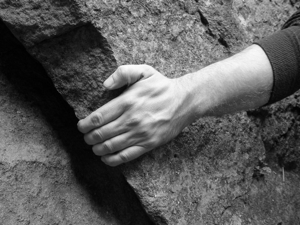The idea behind free climbing is a pure connection between human movement and unchanging terrain. In free climbing only natural terrain formations are used for upward progress; anchoring to terrain using technical devices to facilitate upward progress against gravity is not permitted. Only in snow, ice, and mixed climbing are ice axes and crampons acceptable. Otherwise, other technical devices placed in the terrain can be used only for protection against falls. Naturally, hands and feet are used the most for climbing. Places in the rock which offer support for the hands are called handholds, while those for the feet are called footholds. And yet we climb with our entire bodies, and for this reason the knees, elbows, torso, and the back in particular can be implemented in climbing in certain situations. In exceptionally desperate situations even the head, chin, and rear end can be applied as well, but if this is done often, it is presenting symptoms that something is not right; that we are scraping the bottom of the barrel, so to speak. Over the long term we can achieve nothing with this except an unfortunate demise.
Handholds are formations in the rock which provide an underpinning for the hands. They can take the form of protrusions, depressions, or cracks.



Continued in the book >>

